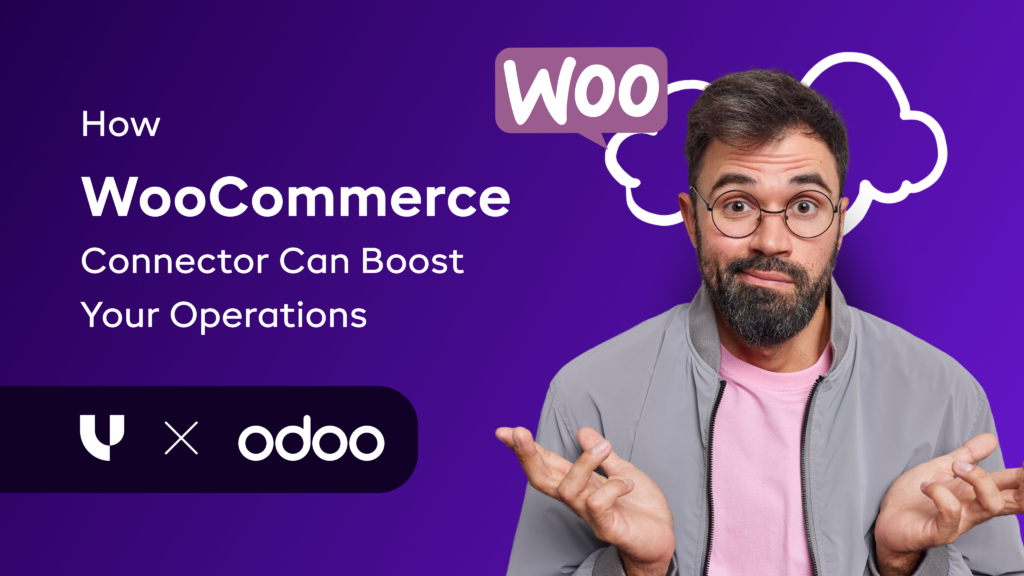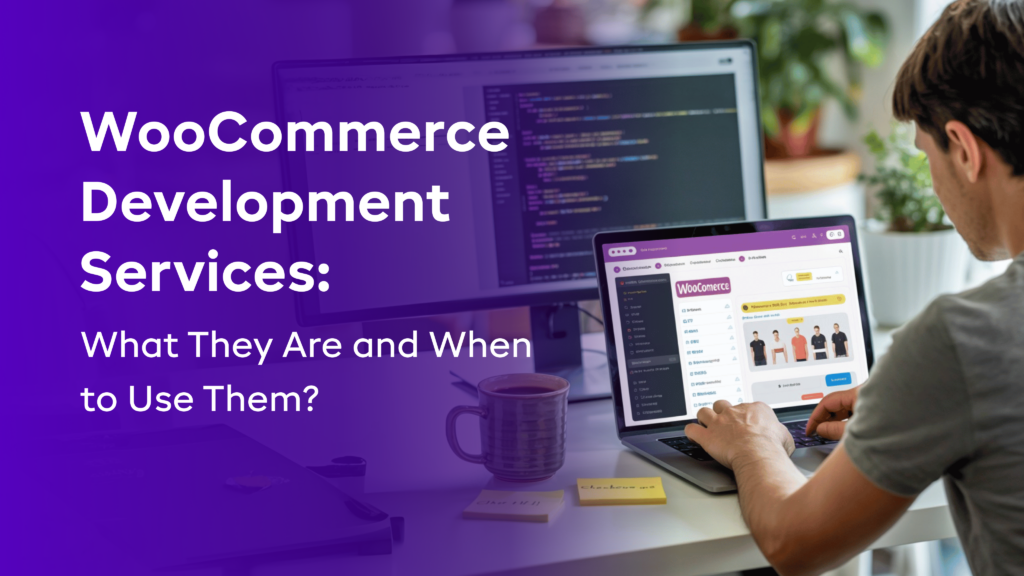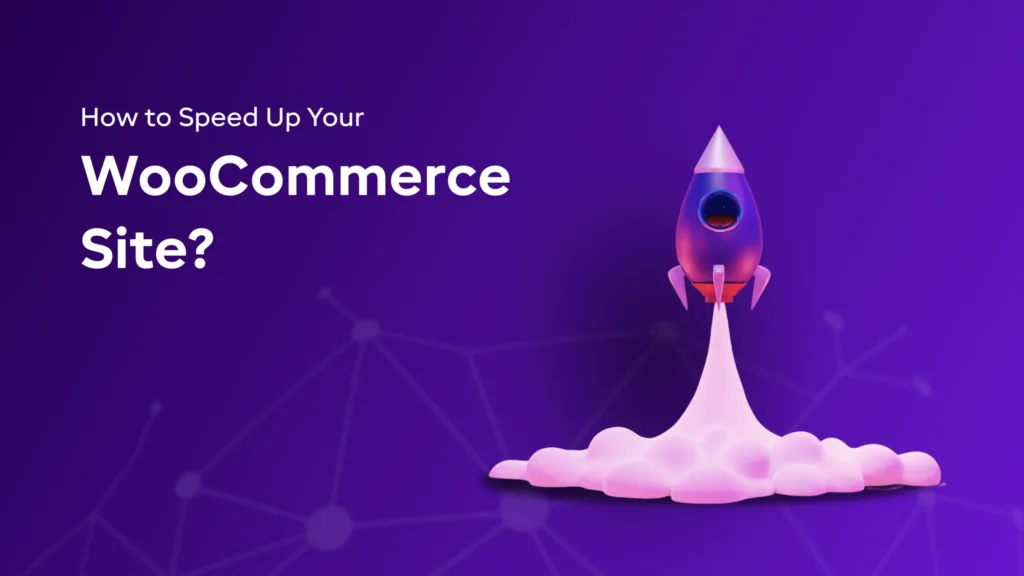How WooCommerce Connector Can Boost Your Operations
Published on July 10th 2025

Introduction
Running a WooCommerce store is exciting, but as your orders, inventory, and customer data grow, so do the operational headaches.
Manual updates, siloed systems, and spreadsheet juggling can slow down even the most promising eCommerce business. That’s where a WooCommerce connector comes in.
By seamlessly integrating WooCommerce with your ERP, CRM, or accounting platform, this tool eliminates repetitive tasks and provides your teams with real-time visibility into sales, stock levels, shipping, and more.
In this blog, we’ll break down how a WooCommerce connector works, what business challenges it solves, and the specific operational wins you can expect, from faster order processing to more innovative inventory management.
Ready to move beyond patchwork workflows and build a leaner, more scalable backend? Let’s get started.
Odoo WooCommerce Connector: What is it About?
The Odoo WooCommerce Connector is a robust solution, developed to streamline and automate the integration of WooCommerce stores with Odoo ERP platforms. This application enables users to effortlessly synchronize items, orders, customers, inventories, and other information across the two systems, ensuring data consistency and reducing manual work.
Real-time synchronization, automated order management, and inventory updates enable businesses to maintain up-to-date information across multiple platforms, thereby enhancing efficiency and accuracy. The link enables enterprises to manage their eCommerce operations from a single, centralized system, increasing efficiency and providing a better customer experience.
What Makes WooCommerce Connector the Game Changer?
The Odoo WooCommerce Connector is designed for e-commerce enterprises that use Odoo ERP, and it may help them in various ways. Are you wondering how? Check out the points added below.
1. Real-time Inventory Synchronization
Data synchronization has been a challenge for businesses trying to maintain track of inventories across numerous platforms. The Odoo WooCommerce Connector offers real-time synchronization between your online WordPress shop and Odoo Inventory. When a product is sold or returned, the inventory levels on both platforms will be instantly updated.
Consider a fashion company that operates both an online WooCommerce store and a physical inventory, which is managed in Odoo, as an example. They can prevent overselling and correctly manage stock due to the real-time inventory sync, which also ensures that clients only purchase items that are currently available.
To integrate your online store with back-office trading workflows, check out our Odoo General Trading Solutionfor full control over inventory, procurement, and sales.
2. Effective Order Management
If the right technologies aren't deployed, coordinating orders across many channels may develop into a logistical headache. The Odoo WooCommerce Connector seamlessly imports WooCommerce sales orders into Odoo. When a consumer places an order through WooCommerce, our connection synchronizes it to Odoo in real-time. This automated import eliminates tedious data entry and ensures that all orders are maintained in a single location. This reduces the likelihood of errors while also accelerating the fulfillment process.
For example, a home décor company that utilizes WooCommerce for online sales receives hundreds of orders each day. By connecting Odoo to WooCommerce via the connector, users can review all orders in one place, prioritize shipments depending on delivery dates, and ensure accurate billing.
3. Data Management
Companies may also use the unique application to consolidate client information in Odoo. Data synchronization allows e-commerce companies to compare consumers' purchasing trends. This approach can also be used to deliver personalized messages and enhance customer service.
A firm that offers beauty items combines its WooCommerce store with Odoo, allowing it to check purchase history, provide loyalty awards, and manage client profiles. This integrated data may help the marketing team deliver tailored experiences, increasing client happiness and retention.
4. Product Management
Managing several products may be challenging for teams. However, the connector designed via Odoo eCommerce development services makes it relatively smooth. This application enables users to update product listings, descriptions, and pricing in Odoo, with changes instantly reflected in WooCommerce, thereby saving time and effort. Companies that use this function can save a significant amount of personnel.
If a furniture firm adds new goods and changes prices inside Odoo's back-end system. Using the Odoo WooCommerce Connector, these modifications are promptly posted to their WooCommerce store, ensuring that product information remains consistent across different operating systems.
Your website built via Odoo CMS development servicescan be enhanced with seamless eCommerce features — learn more in our WooCommerce connector post.
5. Multiple-Store Synchronization
Management of several WooCommerce stores may be time-consuming, mainly when each business functions separately. In such cases, the Odoo WooCommerce Connector may assist in speeding up the process by allowing businesses to connect several WooCommerce stores to a single Odoo database.
For example, a fashion business that manages multiple WooCommerce sites for men's, women's, and children's collections can utilize this connection to synchronize inventory across all storefronts simultaneously. If a new season's collection is added or stock is changed in Odoo, the changes are immediately reflected across all WooCommerce stores, ensuring consistency and efficiency in administration.
Want to start a project with us?
Empowering businesses to achieve greatness through strategic guidance and innovative solutions.
Book A Demo
What to Look for in A WooCommerce Connector?
Not all connectors are created equal. Choosing the right one can mean the difference between a seamless backend and daily tech headaches. Here are the key features to prioritize:
Real-Time Synchronization
Ensure your orders, inventory, and customer data are updated instantly, not in batch jobs that run every few hours.
Custom Field Mapping
Every business tracks different data. Your connector should let you map custom fields between WooCommerce and your ERP or CRM with flexibility.
Robust Error Handling
Things break. Look for connectors with automatic retry logic, clear error logs, and notifications so your operations don’t grind to a halt when syncs fail.
Multi-Store & Multi-Currency Support
If you manage multiple WooCommerce stores or handle international orders, ensure the connector supports multi-channel and currency handling.
Scalability
A connector shouldn’t just work today; it should grow with your business. Look for modular setups or add-ons that can handle increasing volume.
Vendor Support and Documentation
Don’t overlook this. Good documentation shortens setup time, and responsive support can save you hours when troubleshooting.
How to Get Started with a WooCommerce Connector?
Getting started doesn’t have to be a tech marathon. Here’s a simplified onboarding roadmap:
Step 1: Assess Your Current Setup
- Which tools do you want to integrate with WooCommerce (e.g., ERP, CRM, shipping platform)?
- Do you have admin access and updated plugins for all systems?
Step 2: Choose the Right Connector
- Compare options based on real-time sync, supported data types (such as orders, inventory, and customers), and compatibility with your existing software.
- Test the demo if available, and watch how it handles edge cases.
Step 3: Install & Configure
- Install the connector via plugin or cloud dashboard
- Map your fields, e.g., WooCommerce “Order ID” to ERP “Sales Reference”
- Set sync intervals (real-time or scheduled)
Step 4: Run Test Syncs
- Always test with sample data before going live
- Review how it handles failed syncs, partial matches, and custom fields
Step 5: Go Live & Monitor
- Enable full sync once everything looks good
- Set up monitoring and notifications to catch any data issues early
Need help? Many providers offer guided onboarding or expert consulting. Don’t hesitate to take advantage of it, especially if your backend is complex.
Conclusion & Call to Action
In a competitive eCommerce landscape, operational speed and accuracy matter more than ever. A WooCommerce connector provides your business with the digital muscle it needs, automating workflows, enhancing data consistency, and delivering real-time insights across your systems.
The result?
Fewer manual tasks. Faster order fulfillment. Happier customers.
And a backend that scales with your ambition.
Ready to eliminate data silos and build a smarter store?
Collaborate with our WooCommerce development services or schedule a free consultation with our integration experts today.

About Author


